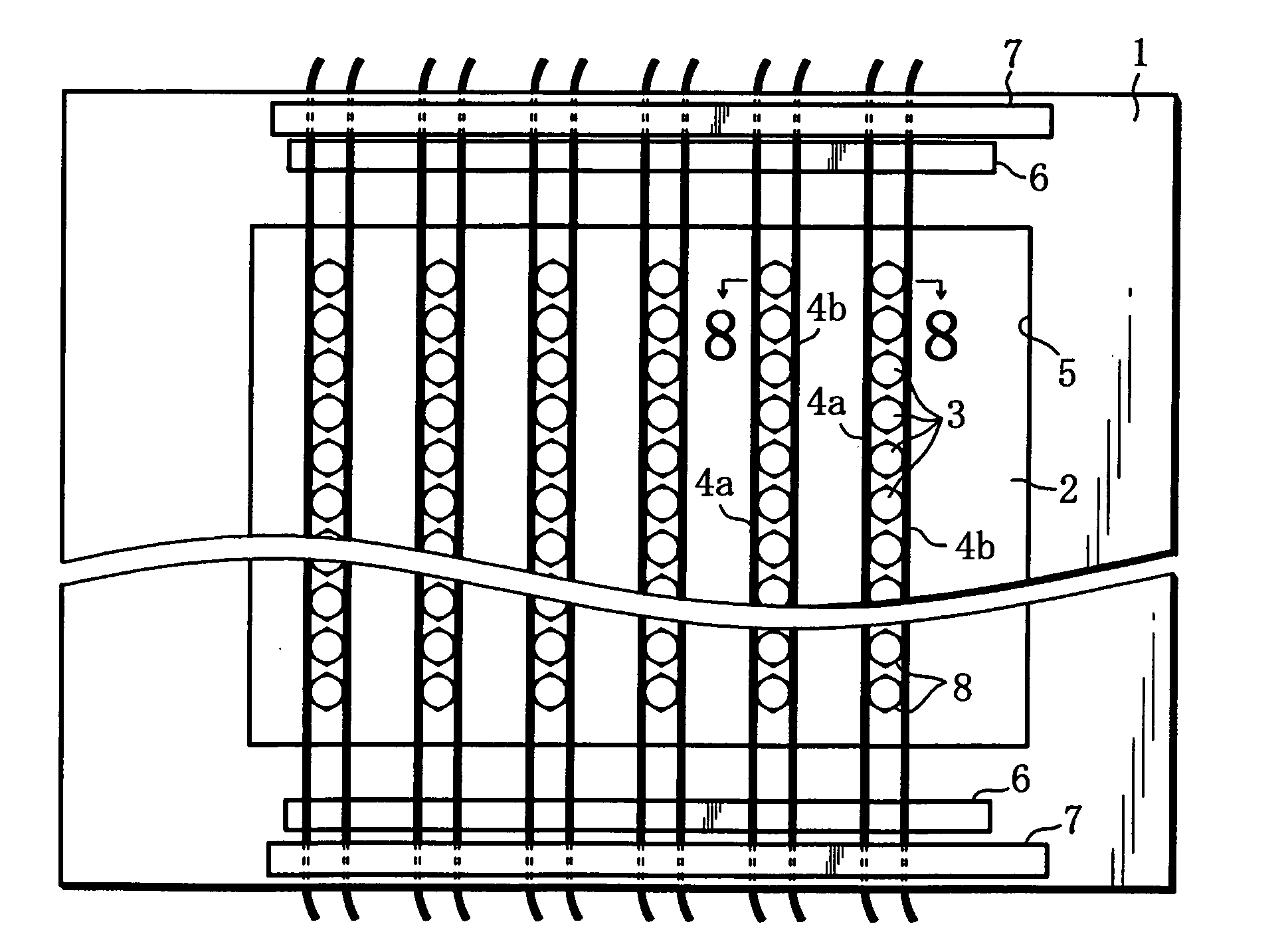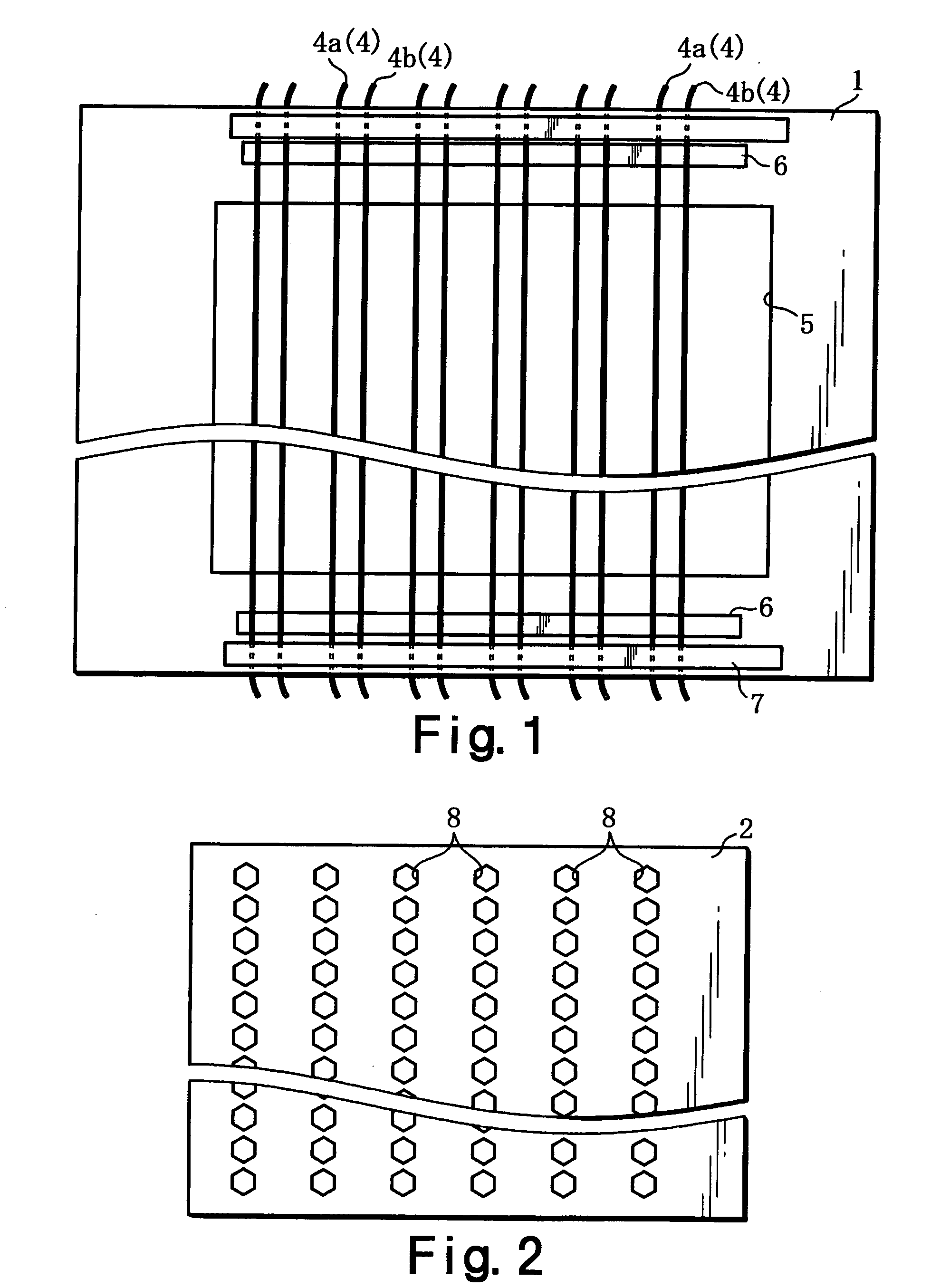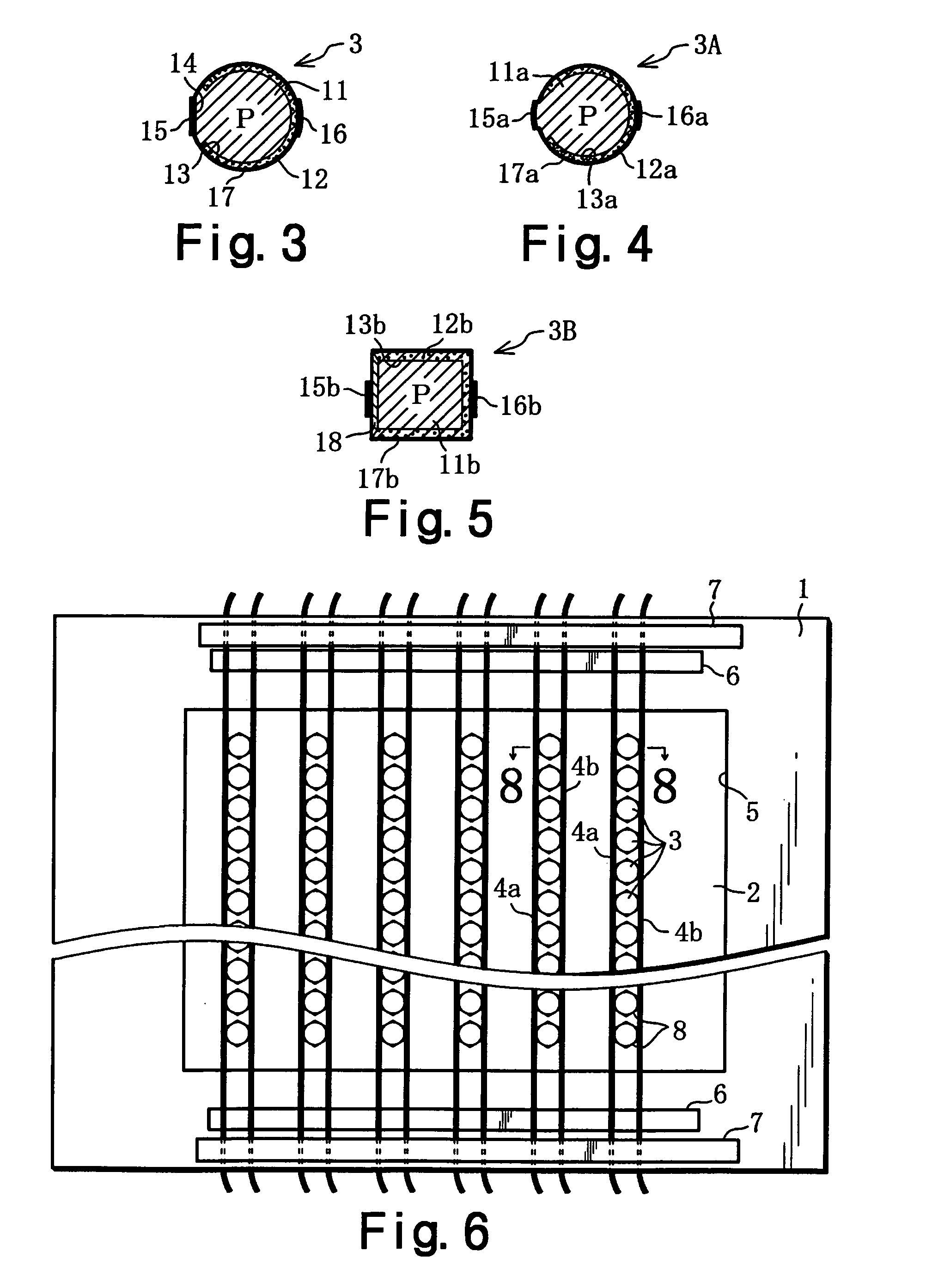Light receiving or light emitting device and itsd production method
a technology of light emitting device and light receiving device, which is applied in the direction of solid-state devices, semiconductor devices, power plants, etc., can solve the problems of increasing the size of the panel, difficult to arrange a plurality of solar cells in the form of a matrix, and complicated solar cell panels, etc., and achieves superior all-purpose utility and easy electrical connection.
- Summary
- Abstract
- Description
- Claims
- Application Information
AI Technical Summary
Benefits of technology
Problems solved by technology
Method used
Image
Examples
Embodiment Construction
[0055] An embodiment of the present invention will be described below with reference to the attached drawings.
[0056] The present embodiment is one example of a case in which the present invention is applied to a cord-form solar cell used as a light receiving device. First, the method of manufacture and structure of this solar cell will be described. First of all, in a first step, as is shown in FIGS. 1 through 5, a temporary fastening plate 1 to which twelve conductive wire members 4 (positive pole wire members 4a and negative pole wire members 4b) are fastened, a retaining plate 2, and (for example) 120 semiconductor elements 3 (hereafter referred to as “solar cells”), are prepared.
[0057] The temporary fastening plate 1 is a rectangular plate with a thickness of approximately 1 to 2 mm constructed from a hard synthetic resin (e. g., a phenol type or epoxy type synthetic resin) or the like.
[0058] A rectangular opening part 5 that is used to insert the retaining plate 2, and a pai...
PUM
 Login to View More
Login to View More Abstract
Description
Claims
Application Information
 Login to View More
Login to View More - R&D
- Intellectual Property
- Life Sciences
- Materials
- Tech Scout
- Unparalleled Data Quality
- Higher Quality Content
- 60% Fewer Hallucinations
Browse by: Latest US Patents, China's latest patents, Technical Efficacy Thesaurus, Application Domain, Technology Topic, Popular Technical Reports.
© 2025 PatSnap. All rights reserved.Legal|Privacy policy|Modern Slavery Act Transparency Statement|Sitemap|About US| Contact US: help@patsnap.com



